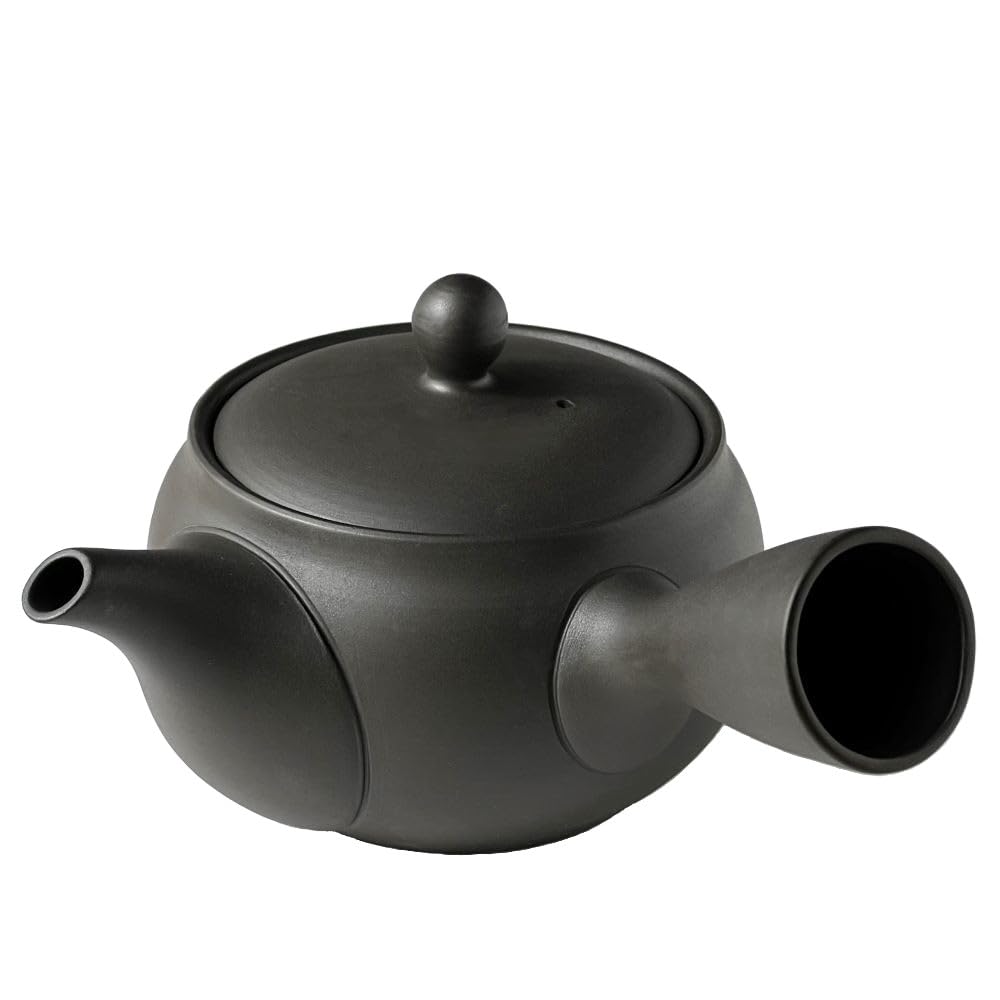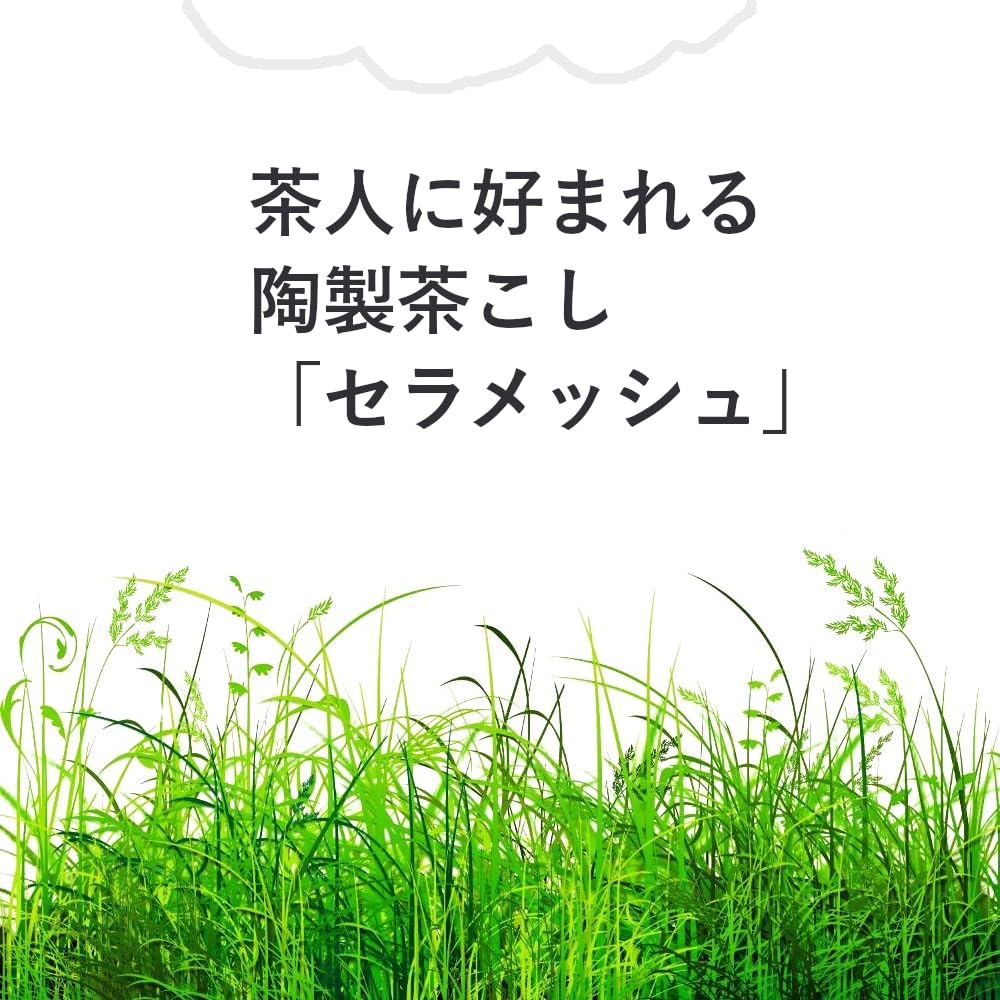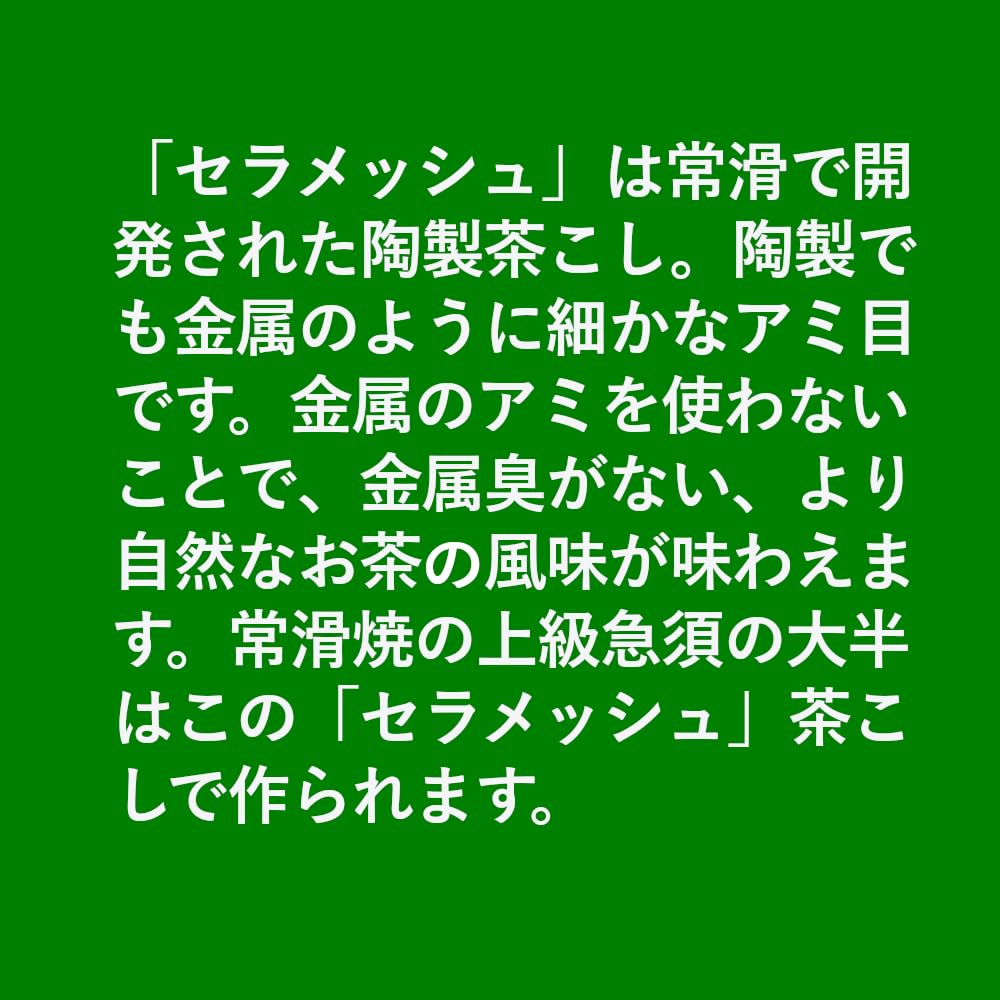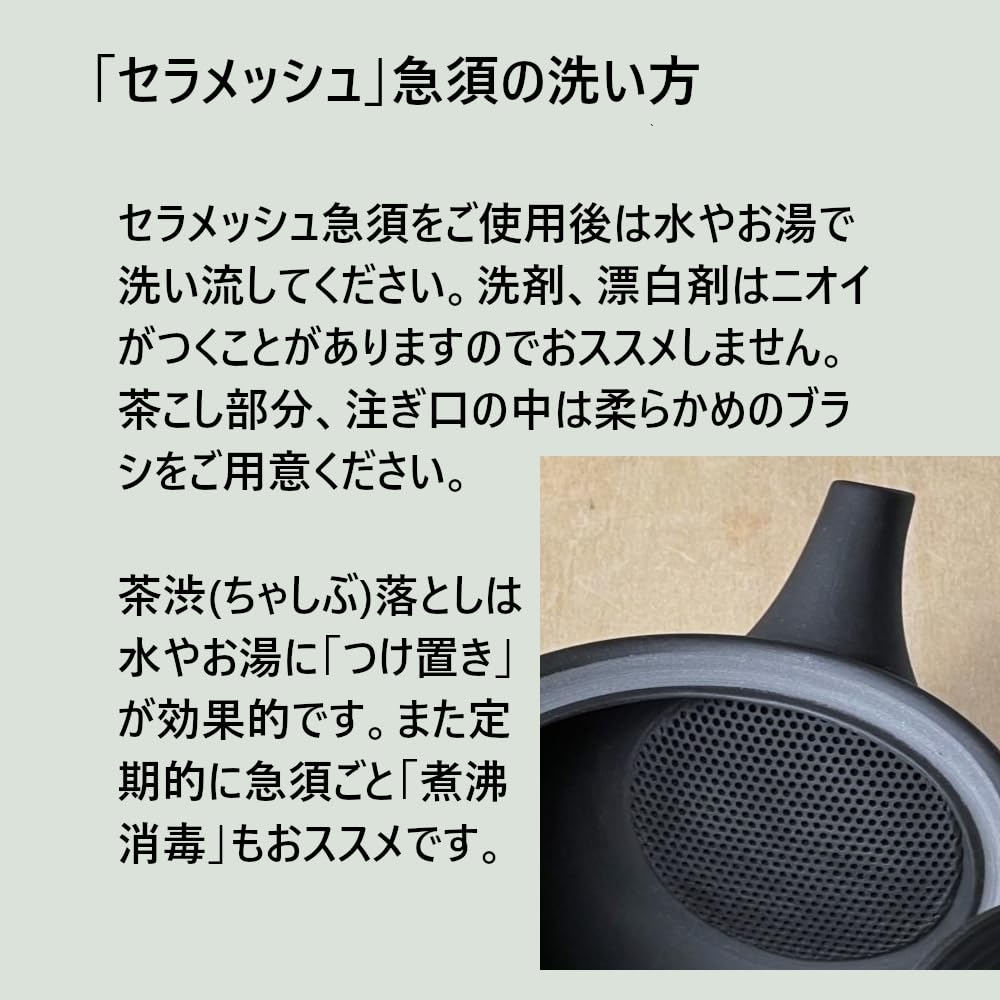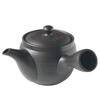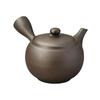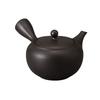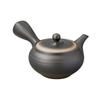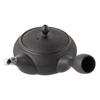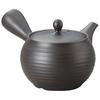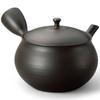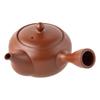Kyusu 204i with Ceramic Tea Ceramesh Black Made in Japan Tokoname-yaki (Teapot) Strainer, Mud, 400ml,










Beskrivelse
Length 166mm x Width 138mm x Height 92mm / Capacity: 400ml (full capacity) / Material: Ceramic (ceramic tea strainer) / Weight: 247g / Tokoname ware (Tokoname ware, Aichi Prefecture) Tokoname-yaki black clay teapot. 400ml capacity, medium size, suitable for 2-3 people. Tokoname ware's red clay and black clay teapots are said to have a mellow, delicious tea taste without any bitterness, due to the high iron content of the clay. "Ceramesh" is a ceramic tea strainer developed in Tokoname. By not using a metal mesh, it has no metallic smell and allows tea to have a more natural flavor. Most high-quality Tokoname ware teapots use this "Ceramesh" tea strainer. Tokoname ware teapots are light, exquisitely crafted, and have an excellent center of balance, making them easy to use. (When using a Ceramesh teapot) The ceramic tea strainer "Ceramesh" was developed to allow you to enjoy the natural flavor of tea, without relying on metal tea strainers, and to adhere to the traditional style of pottery tea utensils. Depending on the type of tea leaves, the strainer may become clogged or small pieces of tea leaves may get mixed in with the tea. The tea leaves that flow out can be eaten as is, but if you prioritize the "tea straining function," we recommend choosing a teapot with a "stainless steel tea strainer." Tokoname is a traditional Japanese pottery production area with a history of over 1,000 years. Tokoname ware, Echizen ware, Seto ware, Shigaraki ware, Tamba ware, and Bizen ware are known as the "Six Ancient Kilns of Japan." Tokoname teapot production began in the middle of the Edo period, and the technique of "shudei teapot" was established thereafter. Along with the shudei teapot, the area has led the way in teapot production in Japan. Today, "TOKONAME" is known overseas as a rare major teapot production area. Tokoname ware is known for producing teapots, and because the clay contains a lot of iron, the tea is said to have a mellow, delicious taste without any bitterness. Tokoname teapots are made using a simple technique called "stoneware" and "yakishime," which involves hardening clay at high temperatures. The more you use them, the more their luster increases and their appearance develops a richer appearance. ・The lid and the body of each Tokoname-yaki teapot are sanded and "ground" together, so there is no wobble in the lid. The sanding marks remain faintly. [How to wash a Ceramesh teapot] After using your Ceramesh teapot, rinse it with water or hot water. We do not recommend using detergent or bleach. Please use a soft brush to clean the tea strainer and inside the spout. After cleaning, be sure to dry thoroughly. We also recommend periodically soaking the teapot in water or hot water, or boiling it to disinfect it. (When using the Ceramesh teapot) The ceramic tea strainer "Ceramesh" was developed to allow you to enjoy the natural flavor of tea, without relying on metal strainers, and by adhering to the traditional pottery tea utensils. Depending on the type of tea leaves, they may become clogged or small pieces of tea leaves may get mixed in with the tea. The tea leaves that flow out can be eaten as is, but if you prioritize the straining function, please choose a teapot with a stainless steel tea strainer.
